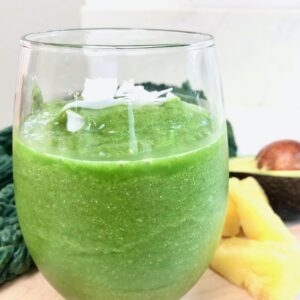Nutrient deficiencies are very common on a gluten-free diet regardless if you have celiac, gluten-sensitivity, or are gluten-free for another health reason. Depending on the vitamin or mineral and its specific roles, correcting a deficiency could support your… Digestive function Metabolism Thyroid Energy levels Bones Cognition and brain function Hormone production Immunity Tissue repair If…
All posts tagged celiac diet
Basic Chia Pudding
Recently I wrote about 15 ways to increase fiber on a gluten-free diet, and one of them was to snack on chia pudding. Chia seeds are high in omega-3 fatty acids, minerals, and FIBER. You can throw them in smoothies or baked goods, or mix them together with a milk of choice to make chia…
15 Ways to Increase Fiber on a Gluten-Free Diet
Gluten-free diets are notoriously low in fiber. Many gluten-free products, especially packaged items such as crackers, breads, baked goods, and flours tend to be lower in fiber than their gluten-containing alternatives. Fiber feeds our gut microbes, who turn around to keep our gut lining healthy, balance our immune system, and decrease inflammation. Fiber also helps…
Tips for Low Iron Levels (plus a high-iron recipe)
Celiacs, especially when newly diagnosed, are very prone to nutrient deficiencies due to how gluten causes damage to the small intestine (where nutrient absorption SHOULD occur). Iron is one of the most common. In fact, unexplained iron deficiency anemia is a major sign of celiac disease and often a clue that helps people get screened…
5 Fall Foods for Gut Health
Fall gives us so much more than pumpkin spice lattes. It delivers a bounty of delicious, gut-healthy fruits and vegetables! Here are five that are in season now and are excellent for your gut. Leeks Leeks are an incredibly rich source of prebiotics, which are the types of fiber that feed the beneficial bacteria in…
Pineapple Green Smoothie
Believe me when I say this is one of the most refreshing smoothies you’ll make this summer. The cucumber, coconut water, and pineapple make this oh-so-hydrating. And don’t worry, this isn’t a smoothie where you’ll be hungry 30 minutes later! That’s because it’s full of fiber (which your gut loves) as well as healthy fats…
Warming Squash and Fennel Curry
In the midst of winter, we start running lower on produce that’s actually in season and good-looking. Winter squash, however, are still going strong this time of year! It’s hard to pick a favorite way to use winter squash, but in my Top 5 would probably be curries. How about you? This Squash and Fennel…
Turkey & Cranberry Stuffed Acorn Squash
If you still crave Thanksgiving-esque flavors throughout the winter, but don’t feel like the massive time and energy it takes to prepare such meal, I gotchu! This Turkey and Cranberry Stuffed Acorn Squash tastes like a lightened-up Thanksgiving and takes a fraction of the time and effort to make. The rosemary, sage, and cranberry give…
Morning Glory Muffins (made from an unusual grain)
Have you ever eaten a pastry or muffin and felt just as hungry as you were before? These Gluten-Free Morning Glory Muffins are quite the opposite. They’re both delicious and super satisfying due to the grain they’re made out of… teff! Teff is a gluten-free, ancient grain originating from Africa. It’s high in fiber, protein,…









